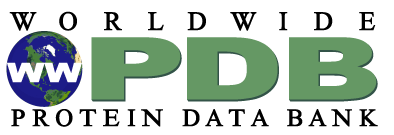Molecule of the Month: Designed Protein Cages
Researchers are modifying natural proteins to design new self-assembling protein cages

Introduction
Protein Cages
Perfect Connection
Interfaces from Scratch

Building on Nature
Exploring the Structure
Designed Protein Cage (PDB entry 3vcd)

The RosettaDesign method was used to design interfaces for two self-assembling protein cages, the tetrahedral one shown earlier, and an octahedral one shown here from PDB entry 3vcd . It is built from the bacterial protein PduT, which is normally a trimer. New interfaces were engineered to connect up each of the edges of the cube-shaped structure. To explore this structure and the designed interfaces in more detail, click on the image for an interactive Jmol.
Topics for Further Discussion
- You can compare the natural proteins with the engineered proteins using the Compare Structures tool.
- What are some of the advantages (and disadvantages) of building large structures using symmetrical components?
Related PDB-101 Resources
- Browse Nanotechnology
References
- 3vdx: Y. T. Lai, K. L. Tsai, M. R. Sawaya, F. J. Asturias & T. O. Yeates (2013) Structure and flexibility of nanoscale protein cages designed by symmetric self-assembly. Journal of the American Chemical Society 135, 7738-7743.
- 3vcd, 4egg: N. P. King, W. Sheffler, M. R. Sawaya, B. S. Vollmar, J. P. Sumida, I. Andre, T. Gonen, T. O. Yeates & D. Baker (2012) Computational design of self-assembling protein nanomaterials with atomic level accuracy. Science 336, 1171-1174.
- 3tom: J. D. Brodin, X. I. Ambroggio, C. Tang, K. N. Parent, T. S. Baker & F. A. Tezcan (2012) Metal-directed, chemically tunable assembly of one- two-, and three-dimensional crystalline protein arrays. Nature Chemistry 4, 375-382.
September 2013, David Goodsell
http://doi.org/10.2210/rcsb_pdb/mom_2013_9


